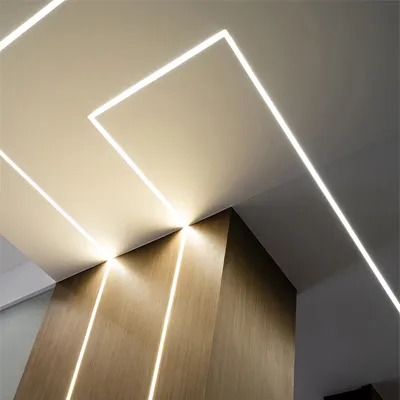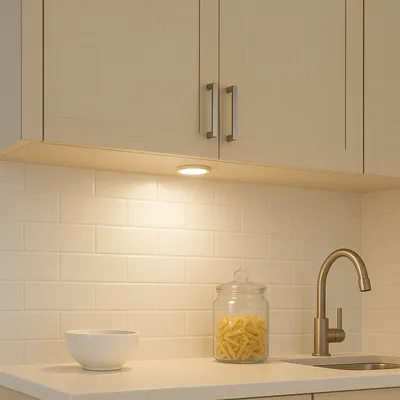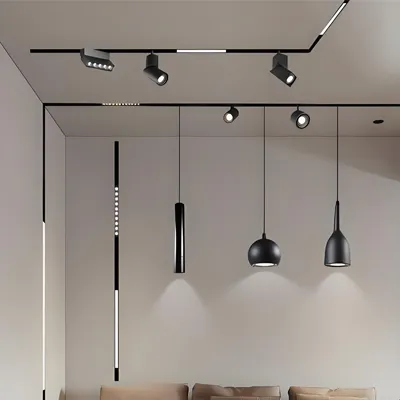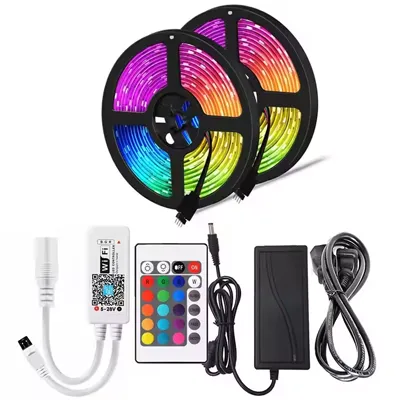Planning new lights for your home, perhaps adding recessed cans in the living room, under-cabinet strips in the kitchen, or getting that basement workshop properly lit, inevitably brings up the question: just how much can you safely add to an existing 15 amp circuit? It’s a practical point nearly everyone encounters sooner or later. While a simple answer like "X number of lights" would be convenient, the reality of electrical load calculation is a bit more involved.
The actual capacity depends significantly on the type of lighting you choose (modern LEDs sip power compared to old incandescent bulbs) and crucially, what else might be drawing power from that same circuit breaker. Figuring this out correctly goes beyond preventing nuisance trips; it's about ensuring the safety of your home's wiring. This guide aims to demystify the process, showing you how to determine the safe limit for your specific setup.
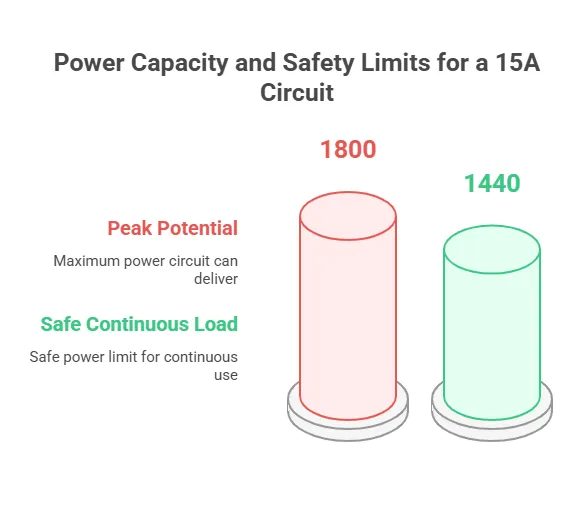
Understanding Your 15 Amp Circuit: The Foundation
Before calculating how many lights you can add, let's establish what a "15 amp circuit" actually represents in terms of power capacity. Think of it as understanding the load rating of a beam before you start stacking weight on it. The "15 amps" tells us the current limit, but we need to translate that into usable wattage and factor in the safety margins mandated by electrical codes.
Voltage and Tota l Potential Power (Watts = Volts x Amps)
First, the basic electrical relationship: Power (measured in Watts, W) equals Voltage (Volts, V) multiplied by Current (Amps, A). In North American homes, the standard voltage is typically 120V. Your circuit breaker limits the current to 15A. Therefore, the theoretical maximum power the circuit could deliver at any given instant is:
120 Volts × 15 Amps = 1800 Watts
This 1800W figure represents the absolute peak capacity. However, particularly for loads like lighting that can run for extended periods, operating right at this peak isn't permitted due to safety considerations related to heat buildup in the wiring.
The Safety Factor: Applying the 80% Rule for Continuous Loads (NEC/CEC)
Electrical codes, such as the National Electrical Code (NEC) in the U.S. and the Canadian Electrical Code (CEC), classify loads that operate for three hours or more as "continuous loads." Lighting often falls into this category. To manage heat and ensure long term safety, these codes require that continuous loads be limited to 80% of the circuit breaker's rating. This isn't arbitrary; it's a tested safety margin.
Applying this rule gives us the practical, safe wattage limit for continuous use on our 15A circuit:
1800 Watts (Peak Potential) × 0.80 (Derating Factor) = 1440 Watts
Treat this 1440 Watts as your working budget for the entire 15 amp circuit when dealing with lighting and other potentially continuous loads. Staying below this number is key to complying with code and ensuring safe operation.
Identifying Your Circuit: Is it Dedicated or Shared?
Here's another practical point: circuits in homes rarely serve just one purpose. That 15 amp breaker protecting your planned lighting might also be feeding power to wall outlets (receptacles), a ceiling fan, or perhaps the bathroom exhaust fan. Anything sharing the breaker shares that same 1440 Watt budget.
How do you determine what's on the circuit?
- Panel Labels: Check your breaker panel directory first. Labels might give you clues (e.g., "Dining Room Lights + Plugs"). Accuracy varies wildly, though.
- Mapping via Testing: The definitive method involves turning the specific 15A breaker OFF. Then, methodically test everything in the vicinity: flip light switches, plug a small tester or lamp into every outlet, check fans. Anything that stops working is powered by that breaker.
Knowing the full scope of what your circuit powers is necessary before you can accurately calculate how much capacity remains specifically for your new lighting project.
How Many Lights on a 15 Amp Circuit: The Calculation Method
Now that we've established our safe working budget for a 15 amp circuit (that's 1440 Watts, remembering the 80% rule), we get to the heart of the matter: figuring out how many lights that budget actually allows. This isn't guesswork; it involves a straightforward calculation based on the power consumption of the lights you intend to use. Let's walk through the steps.
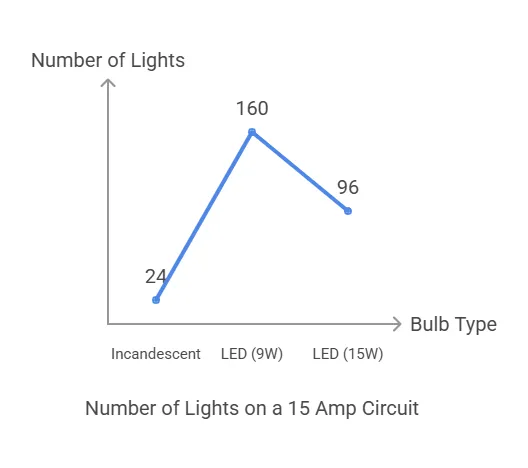
Finding the Wattage of Your Lights (Actual vs. Equivalent)
The single most important piece of information you need for each light fixture or bulb is its actual power consumption in Watts (W). You'll usually find this printed directly on the bulb itself, on its packaging, or in the fixture's specifications.
Here’s a point of caution: be wary of "equivalent wattage" ratings, especially common with LEDs. A label might say "100 Watt Equivalent" but the LED might only consume 15 Watts. That "equivalent" number tells you about the light output compared to an old incandescent bulb, which is useful for choosing brightness, but it's useless for electrical load calculations. You must use the actual wattage figure – the number followed by a "W" – because that's the real electrical load the bulb places on the circuit. Using the "equivalent" number would drastically overestimate the load and lead you to install far fewer lights than the circuit can safely handle.
The LED Advantage: Why Bulb Type Dramatically Changes the Numbers
Understanding the actual wattage immediately highlights why the type of bulb you choose makes such a massive difference. Modern LED technology is incredibly efficient compared to older incandescent bulbs.
- Incandescent Bulbs: These classic bulbs are essentially heaters that produce light as a byproduct. A standard 60W incandescent bulb consumes exactly 60 Watts of power.
- LED Bulbs: Light Emitting Diodes generate light directly with very little heat waste. An LED bulb producing the same amount of light as that 60W incandescent might only consume 8W or 9W.
This efficiency difference has a huge impact. Using our 1440 Watt safe budget:
- With 60W incandescent bulbs, you could run 1440W / 60W/bulb = 24 bulbs.
- With 9W LED bulbs, you could run 1440W / 9W/bulb = 160 bulbs.
See the difference? Choosing LEDs dramatically increases the number of light points you can safely place on a single 15 amp circuit. This is why accurately knowing the actual wattage of your chosen bulb or fixture is the foundation of this calculation.
Calculating for Lights Only (Simple Scenario Examples)
Let's apply this using our 1440 Watt safe capacity. For these initial examples, we'll assume the circuit is dedicated only to lighting; we will address shared circuits shortly. The calculation is straightforward:
Number of Lights = Safe Circuit Capacity (Watts) / Wattage per Light (Watts)
Example 1: Considering 9W LED recessed lights. This is a common fixture in modern installations due to its efficiency.
1440 Watts / 9 Watts/light = 160 lights
The low wattage allows for a significantly high number of these lights on a single 15A circuit.
Example 2: Using traditional 60W incandescent bulbs. While less common now, understanding the impact of older technology is useful for comparison or if dealing with existing wiring.
1440 Watts / 60 Watts/light = 24 lights
Notice how the much higher wattage per bulb drastically reduces the permissible number compared to the LEDs.
Example 3: Planning for "100W equivalent" LEDs. Remember, we need the actual wattage, not the equivalency rating. Let's assume a typical 100W equivalent LED consumes approximately 15W (always verify the specific bulb's rating).
1440 Watts / 15 Watts/light = 96 lights
Using the actual 15W consumption allows for many more lights than if we were using true 100W incandescent bulbs (1440W / 100W = 14 lights). This again underscores the importance of calculating with the actual wattage drawn by the device.
These examples show the calculation process when a circuit serves only lights. However, the reality in most homes requires considering other devices sharing the same circuit breaker.
Accounting for Everything Else: The Shared Circuit Reality
In most homes, it's rare for a 15 amp circuit breaker to serve only lights. More commonly, it will also power several wall outlets (receptacles) and perhaps fixed appliances like ceiling fans or bathroom exhaust fans. This is what we mean by a "shared circuit," and accurately calculating the available capacity for your lights requires accounting for these other potential loads. Ignoring them means you risk overloading the circuit even if your light count seems reasonable in isolation.
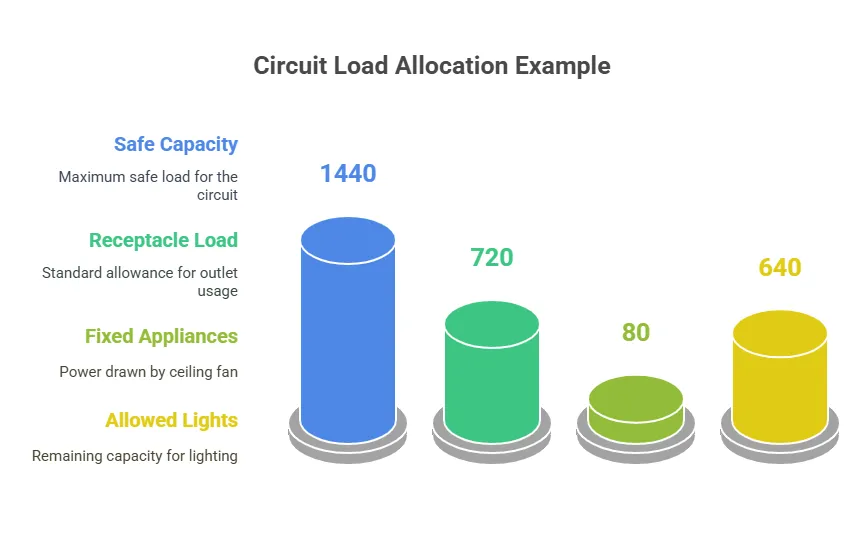
Calculating Receptacle Load (NEC/CEC Guidelines)
How do you account for things plugged into outlets when you might not always know what will be used? Electrical codes provide standard calculation methods for general purpose receptacles on lighting circuits.
- Standard Allowance: For general load calculations, the NEC often uses a standard load value per receptacle yoke (a single yoke can hold one or two outlets). A common value used in calculations is 180 Volt-Amps (which is essentially 180 Watts for resistive loads like typical household items) per yoke. So, if your lighting circuit also feeds 5 receptacle yokes, you'd allocate 5 yokes × 180 VA/yoke = 900 VA (or Watts) from your 1440W budget just for potential outlet usage.
- Known Continuous Loads: If you know a specific outlet will power a device that runs continuously (like networking equipment or a specific lamp always left on), you should use the actual wattage of that device (and apply the 80% rule to its portion if it runs 3+ hours) instead of the standard allowance for that outlet.
- CEC Note: Canadian Electrical Code rules might have slightly different standard allowances or calculation methods for receptacle loads. It's always best to consult the specific code applicable to your region if precise calculation is required for permitting.
The key takeaway is that receptacles aren't "free"; they represent potential load that consumes part of your circuit's capacity.
Adding Other Fixed Appliances (Ceiling Fans, etc.)
If your circuit mapping revealed that the breaker also controls hardwired items like a ceiling fan or a bathroom vent fan, you need to add their wattage to the calculation as well.
- Find the Wattage: Look for a label directly on the appliance motor housing or check the manufacturer's documentation. Ceiling fans vary, but might draw 50-100W (including lights if integrated). Bathroom fans are typically lower, maybe 20-50W.
- Add it to the Load: Add the actual wattage of these fixed appliances directly to your running total load.
Putting It All Together: Calculating Total Circuit Load
Now you combine all the pieces to see what's left for your lights. Let's use an example:
- Start with Safe Capacity: 1440 Watts
- Subtract Receptacle Load: Assume 4 receptacle yokes are on the circuit: 4 yokes × 180 VA/yoke = 720 Watts. Remaining capacity: 1440W - 720W = 720 Watts.
- Subtract Fixed Appliances: Assume a ceiling fan using 80W is also on the circuit. Remaining capacity: 720W - 80W = 640 Watts.
- Calculate Allowed Lights: Now, use this remaining capacity (640W) to calculate your lights. If you're using 9W LED lights: 640 Watts / 9 Watts/light ≈ 71 lights.
This comprehensive calculation, accounting for everything on the circuit, gives you a much more realistic and safer limit for your lighting project compared to only considering the lights themselves.
Recognizing Overload: Staying Within Safe Limits
We've walked through how to calculate the total potential load on your shared 15 amp circuit by adding up the wattage of your planned lights, the allowance for receptacles, and any other fixed appliances. Now comes the moment of truth: comparing that total calculated load to the safe limit we established earlier. This check confirms whether your plan is electrically sound or if you're heading towards an overloaded circuit.
The Math Check: Staying Below the 80% Safe Limit
It's simple arithmetic, really. Take the total wattage figure you calculated (lights + receptacles + fixed appliances) and compare it directly to the 1440 Watt safe operating capacity for a 15 amp circuit (derived from the 80% rule).
- If your total calculated load is less than or equal to 1440 Watts: You're generally in good shape. Your plan respects the safety margin built into the electrical code.
- If your total calculated load exceeds 1440 Watts: Stop. Your plan, as it stands, creates an overload situation. You'll need to revise it by either reducing the number or wattage of lights, removing other loads from the circuit, or considering the addition of a new circuit entirely (which is often the best long-term solution for significant load increases).
This calculation is the definitive way to know if you have too many devices planned for the circuit, moving beyond guesswork or simply counting fixtures.
What Happens If You Overload? The Risks Explained
So, what's the big deal if you go over that 1440 Watt limit slightly? Will the electrical police come knocking? Not exactly, but you are creating unnecessary risks. The circuit breaker is designed as a safety device to interrupt the circuit when it detects excessive current (which corresponds to excessive wattage).
- Nuisance Tripping: The most immediate and obvious result is that the 15 amp breaker will likely trip frequently, shutting off power to everything on that circuit. While annoying, this is actually the breaker doing its job, preventing a worse situation.
- Wire Overheating: This is the more serious, hidden danger. Circuit wiring inside your walls is sized specifically for the amperage rating of the breaker (typically 14-gauge wire for a 15A circuit). Consistently drawing more current than intended causes the wires to heat up beyond their design limits.
- Insulation Damage & Fire Hazard: Over time, this excessive heat can damage the wire's protective insulation, making it brittle or even melting it. Degraded insulation increases the risk of short circuits, arcing, and potentially igniting nearby combustible materials within the wall cavity. This is how electrical fires can start.
Think of the 80% rule and the breaker not just as limits, but as safeguards against these heat-related hazards. Pushing past them compromises that safety system.
Beyond the Basics: Related Considerations
While our main focus is the 15 amp lighting circuit, a couple of related points often come up and are useful for broader context.
A Quick Look: 15 Amp vs. 20 Amp Circuits
You'll often find both 15 amp and 20 amp circuits in a typical home. What's the difference in capacity? A 20 amp circuit, following the same principles (120V, 80% rule for continuous loads), offers a higher safe wattage budget:
120 Volts × 20 Amps × 0.80 = 1920 Watts
That's an extra 480 Watts of capacity compared to a 15 amp circuit (1920W vs 1440W). You'll typically find 20 amp circuits used for kitchen countertop receptacles (to handle higher-wattage appliances), laundry areas, sometimes garage outlets, or dedicated circuits for specific appliances. While most standard bedroom or living room lighting and receptacle circuits are 15 amp, knowing the capacity difference helps understand why certain areas might have the higher-rated circuits.
A Note on Wire Gauge (Why 14 AWG is Typical for 15A)
The amperage rating of a circuit breaker is directly tied to the size (gauge) of the wire used for that circuit. Lower gauge numbers mean thicker wire, capable of carrying more current safely without overheating.
- 15 Amp Circuits typically use 14-gauge copper wire (AWG - American Wire Gauge).
- 20 Amp Circuits require thicker 12-gauge copper wire.
Using the correct wire gauge is fundamental. You cannot simply swap a 15 amp breaker for a 20 amp breaker on existing 14-gauge wiring; this would create a dangerous situation where the wire could overheat long before the larger breaker trips. The breaker's job is to protect the wire, and they must be properly matched. This is why understanding the existing wiring is part of safe electrical work.
When Precision Matters: Consulting Codes & Professionals
We've covered the core principles and calculations for determining how many lights you can safely put on a 15 amp circuit. Following the 80% rule and accounting for all loads is generally sufficient for most typical home lighting projects. However, there are situations where more precision is needed, or where relying solely on a general guide like this isn't the best approach. Understanding the applicable codes and knowing when to bring in a professional are key parts of doing electrical work responsibly.
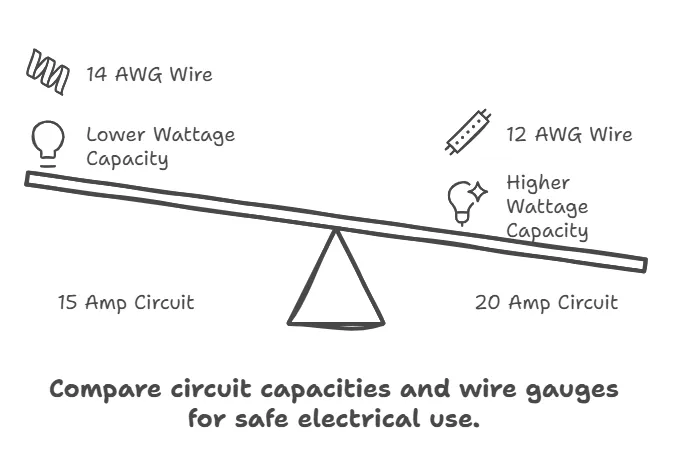
NEC vs. CEC: Acknowledging Regional Differences
Throughout this guide, we've referenced both the NEC (National Electrical Code, prevalent in the US) and the CEC (Canadian Electrical Code). While the fundamental principles of load calculation and safety (like the 80% rule for continuous loads) are very similar, there can be subtle differences in specific requirements, standard calculation values (like the assumed load per receptacle), or installation practices between these codes. If you're undertaking a project that requires permits, inspections, or if you simply want to ensure absolute compliance with local regulations, it's always wise to consult the specific electrical code enforced in your jurisdiction. Local building departments can usually provide information on applicable codes.
Why Calculation Matters More Than Counting Outlets/Fixtures
You might sometimes hear rules of thumb like "no more than 8 outlets on a 15 amp circuit" or "a maximum of 12 fixtures." While these might have originated from older practices or simplifying assumptions, relying on them can be misleading and potentially unsafe in modern contexts. Here's why the wattage calculation method we've discussed is superior:
- Varying Loads: Counting fixtures tells you nothing about their actual power consumption. Ten 5W LED lights draw far less power than ten 75W incandescent bulbs. Similarly, what's plugged into outlets varies immensely. Calculation addresses the actual electrical load, which is what truly matters for safety.
- LED Efficiency: The prevalence of low-wattage LEDs makes simple fixture counting particularly outdated. You can often safely power many more LED fixtures than older rules of thumb would suggest, provided you do the math correctly.
- Code Compliance: Electrical codes base circuit load limits on calculated wattage or specific allowances (like the 180VA per receptacle yoke), not arbitrary fixture counts. Proper calculation aligns with how safety standards are actually defined.
Stick to the math. It gives you a reliable, code-aligned assessment of your circuit's capacity based on the specific devices you plan to use.
When to Call a Licensed Electrician
While this guide aims to empower you with knowledge, DIY electrical work has its limits, and safety should always be the priority. There are definitely times when calling in a qualified, licensed electrician is the right call:
- If You're Unsure or Uncomfortable: If any part of the process feels confusing, if you're not confident working inside electrical boxes, or if you doubt your calculations, don't guess. Professionals have the training and tools to do the job safely and correctly.
- Adding New Circuits: If your calculations show the existing circuit is already near capacity or overloaded by your plans, the solution is often to add a new, dedicated circuit from the breaker panel. Running new wiring and installing breakers is work best left to a licensed professional.
- Dealing with Old or Faulty Wiring: If you discover old wiring (like knob-and-tube), aluminum wiring, or signs of damage (scorched insulation, frayed wires), stop immediately and consult an electrician. These situations require expert assessment.
- Permit Requirements: Many electrical modifications, especially adding circuits or significant rewiring, legally require permits and inspections. An electrician will know the local requirements and ensure the work passes inspection.
- Code Questions: If you need definitive answers about specific code requirements in your area, an electrician familiar with local regulations is your best resource.
Investing in professional help when needed isn't just about convenience; it's about ensuring the long-term safety and compliance of your home's electrical system.
Frequently Asked Questions (FAQ)
Here are answers to some common questions that often arise when figuring out lighting loads on a 15 amp circuit, touching on nuances we didn't fully explore in the main guide:
Q: Does installing a dimmer switch affect how many lights I can put on the circuit?
A: Generally, the dimmer switch itself consumes a very small amount of power, often negligible in the overall load calculation for a 15 amp circuit. The main load calculation should still be based on the total wattage of the bulbs or fixtures being controlled. However, it's worth noting that dimmers can sometimes cause issues if not properly matched with the bulbs (especially certain LEDs), leading to flickering or buzzing, but this is a compatibility issue rather than a significant load calculation factor. Focus on the wattage of the lights themselves for your load math.
Q: What if my home's voltage isn't exactly 120V? How does that change the calculation?
A: That's an astute question. While 120V is the nominal standard in North America, actual voltage at your outlets can fluctuate slightly, perhaps ranging from 115V to 125V. For our safe wattage calculation (Volts × Amps × 0.8), using the nominal 120V generally provides a reliable and standard basis. If your voltage is consistently lower (say 115V), the circuit's actual wattage capacity would be slightly less (115V × 15A × 0.8 = 1380W). If it's consistently higher (say 125V), the capacity is slightly more (125V × 15A × 0.8 = 1500W). For most residential planning, using the standard 120V calculation (resulting in 1440W safe capacity) is perfectly adequate and common practice unless you have specific reasons or measurements indicating a significant, consistent deviation.
Q: Is there a strict code limit on the number of outlets or light fixtures allowed on a 15A circuit, regardless of the calculated wattage?
A: This is a common point of confusion. While some older local rules or rules of thumb might have mentioned fixture counts (like "no more than 12 outlets/lights"), the major electrical codes (NEC/CEC) primarily limit circuits based on the calculated load (wattage), not an arbitrary count of connection points. The reason, as we discussed, is that fixture wattages vary immensely. The codes do use standard wattage allowances for calculating receptacle loads (like the 180VA per yoke example) when the actual load isn't known, but they don't typically impose a hard cap on the number of light fixtures or outlets as long as the total calculated load stays within the 80% safety margin (1440W for a 15A circuit). Focus on the wattage calculation; it's the technically correct and code-aligned approach.
Q: Can I easily mix different types of bulbs (LED, incandescent) on the same 15A circuit?
A: Electrically, yes. You simply add up the actual wattage of each individual bulb or fixture, regardless of its type, to get your total lighting load. For example, you could have five 8W LEDs (40W total) and two 60W incandescent reading lamps (120W total) on the same circuit, for a combined lighting load of 160W. The key is always using the actual wattage of each item in your addition. The practical challenge might come if you try to dim mixed types of bulbs on the same dimmer switch, as LEDs and incandescents respond differently to dimming signals, potentially causing flickering or uneven dimming. But from a pure circuit load perspective, just add up the individual wattages.
Q: Are online calculators reliable for figuring out how many lights I can put on a circuit?
A: Online calculators can be a helpful starting point or a quick check, but use them with caution and understanding. A good calculator should, at minimum, ask for your circuit amperage (15A), voltage (usually assumes 120V), and the actual wattage of your lights. It absolutely must incorporate the 80% rule for continuous loads to give a safe result. Crucially, most simple online calculators don't account for shared circuits – the load from outlets or other appliances. If you use one, treat the result as the limit only if the circuit is dedicated solely to those lights. For shared circuits, you still need to manually subtract the load from other devices using the methods we discussed to get an accurate picture. Don't rely on a calculator blindly; understand the principles behind it.


